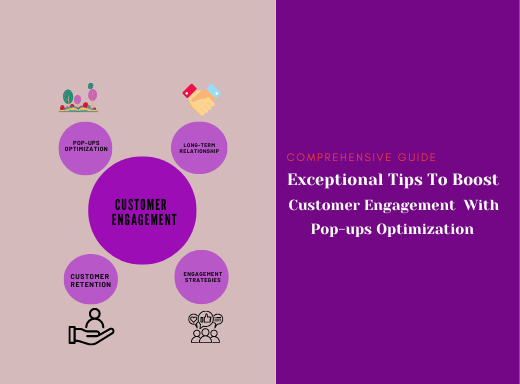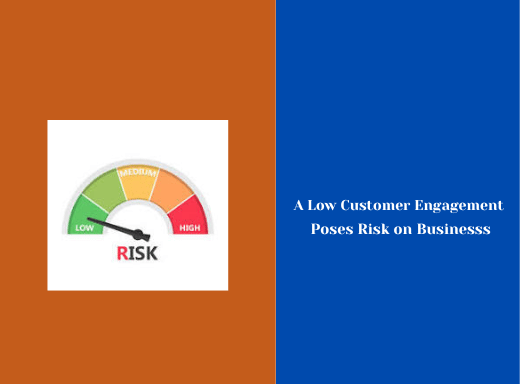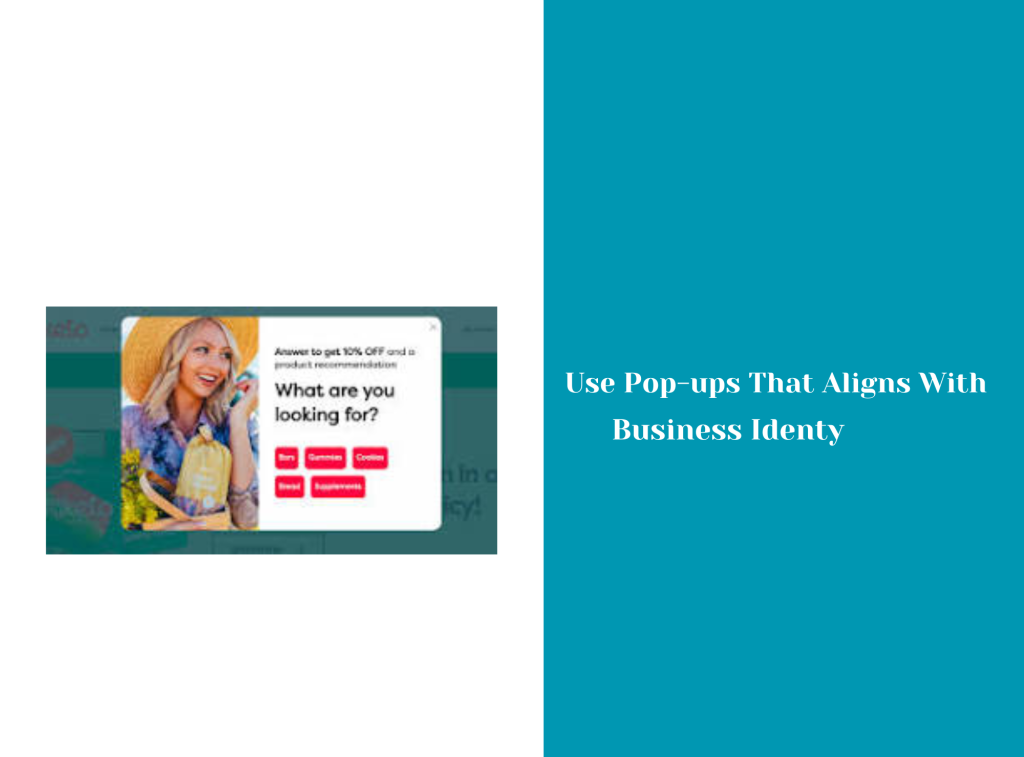
Are you entangled in a web of diminishing conversion rates or a slow but steady decline in sales? Or is it possible that you’re having trouble getting your brand in front of your target market among formidable competitors?
Engaging customers is essential to the expansion of any organization. The key components of a well-defined customer engagement strategy are illustrated by the fact that every 5% of your work directed towards engaging your audience boosts your profit returns by 25% to 95%. Engagement is more than just the exchange of goods and services; it also involves an emotional bond between a brand and its audience.
Here’s a comparison. Compared to a brand you randomly patronize online, you are more likely to suggest to family and friends a company with whom you have an emotional or psychological relationship. Vibrant rivals can be found all over the internet, offering the same goods or services to the same customer base for the same cost or value. The likelihood that a visitor to your e-commerce website will return is just 1%, and the factors that influence this could include the caliber of goods or services offered, the way users interact with the website, the rules surrounding transactions, or the degree to which an e-commerce website offers customized experiences to its users.

Why is low customer engagement detrimental to business growth?
A low rate of customer engagement threatens the expansion of a business. Customers who are not interested in a product are probably not going to browse things on a website, buy anything, or come back for more. It is necessary to keep customers informed about updates to products or services. How is that possible with a low email contact list?
Astute entrepreneurs want to implement enduring and coherent company engagement tactics to establish and maintain connections with their clientele. To improve user engagement, e-commerce, blog, and SaaS websites need to be optimized using a more potent tool. And here’s where we get involved:.
What are website pop-ups?

E-commerce websites may effectively gather visitor information and turn it into potential leads by using pop-up windows on their websites. The enormous advantages of pop-up optimization are used by e-commerce, blog, and SaaS websites for a variety of purposes, such as producing a large number of leads, improving user engagement on websites, advertising online stores, raising conversion rates, offering customized opportunities on websites through customer feedback and surveys, and lowering the chance of website visitors leaving.
Why LeadForza Social Proof Pop-ups?
Through the collection and conversion of visitor data into actual potential leads and the nurturing of current customers through customer engagement strategies that captivate and maintain your audience, LeadForza is a social proof pop-up that enables your e-commerce website to sell 30% more. Additionally, it is specifically designed to import possible leads straight into your email marketing platform and interface with any website, with or without Google Tag Manager. A heartfelt farewell to low consumer engagement and churning!
If you have been searching the web for the finest ways to increase client engagement but have been disappointed, I have got you covered on this one!
This blog post will discuss ten outstanding techniques for making captivating pop-ups that promote return visits and improve.
10 Exceptional Tips To Create Engaging Pop-ups That Enhance Effective Customer Engagement
Designing Pop-ups That Align With Brand Identity

While pop-ups can be a powerful tool to optimize websites for increased conversion rates, they can also be very distracting. You might have heard or seen people complain about too many pop-ups on a website, thus making the user experience a hassle. But the same distracting pop-ups were designed to energize the site for more sales or leads! So how do you design your pop-ups to capture leads and not distract them? It’s simple! Design your website pop-ups to align with your brand identity. By alignment, we speak of the same color, font, design, and style as your website, to create a sense of harmony for the users. Employ a concise and captivating headline that conveys the value of your offer and insert a visible CTA [Call-To-Action} button to give a sense of urgency or direct the customer to the next steps. Pop-ups can be optimized into sizes that fit your website layout and do not entirely block the main content. Also, you can resourcefully maximize triggers to decide when and how your pop-ups display on your website. Examples of triggers you can explore are time on page, exit intent, scroll depth, or click. For expertise, you can adjust the frequency limit to reduce showing the same pop-ups to a specific user. Finally, you can use analytic tools to measure your pop-up metrics and conversion rates to keep updated on the results and customer preferences.
Utilizing Pop-ups to Collect Customer Feedback and Suggestions
Many e-commerce websites maximize the profits on their website by up to 300% using customer feedback and suggestions garnered through optimizing effective pop-ups on their websites. Customers’ feedback and suggestions are essential in creating a personalized user experience for existing or active customers. E-commerce websites that tailor their products or services to suit customers’ tastes or preferences are more likely to expect repeat visits, which enhances brand loyalty.
However, website pop-ups must be carefully optimized to not be a hindrance for website users. There are various ways to encourage your customers to provide feedback and suggestions. This includes making rewards or incentive offers for completing a survey or providing feedback, i.e., “Complete this survey to get a 20% discount on your two first orders!” Others may include setting triggers for the perfect timing, asking straightforward and clear questions, and using catchy headlines. In addition, skipping or closing surveys should also be made easier for users by adding a visible close button displaying “skip” or “no thanks.”
Designing Pop-ups To Offer Exclusive Discounts and Incentives to Loyal Customers
Providing exclusive discounts and incentives to customers will skyrocket the customer retention rate, increase brand loyalty, and maximize the total revenue or profits. This could be done by segmenting your customers based on their tastes and preferences, using gamification to create exciting and fun pop-ups for your website, employing personalized and relevant messages or texts, creating a sense of FOMO with urgency or scarce resources, and using analytic tools to analyze the metrics of your website pop-ups for maximum satisfaction.
Using pop-ups to cross-sell and up-sell products to increase average order value.
Pop-ups can be utilized to cross-sell and up-sell by structuring or designing pop-up triggers to display special offers or exclusive discounts during checkout. This could encourage the customer to envision future visits, purchase more, or engage in word-of-mouth marketing by publicizing to friends and families.
Using pop-ups to segment customers and deliver personalized content.
With the use of pop-up surveys or quizzes, business owners can garner opinions and ideas on customer preferences and tastes. These opinions or suggestions can be used to craft messages for exclusive offers or personalized recommendations. You could also use this to craft relevant headlines, content, or text that resonates with each segment.
Using pop-ups to re-engage loyal customers and prevent churning.
Customers are more likely to revisit sites or web pages that engage them with their brands. Tailor pop-ups towards curating displays that engage loyal customers by using exclusive discount campaigns and special gifts and offers for active customers. This will initiate a sense of community among your users.
Designing pop-ups to generate referrals and word-of-mouth marketing.
Employ the use of compelling language and persuasive visuals to encourage existing customers to tell their friends and families about your product. It can be more enticing by including exclusive offers for each referral or exclusive access to some special offers.
Using pop-ups to launch new products, features, or updates to create anticipation.
For maximal customer engagement, use pop-ups to launch updates on your e-commerce website. People feel a sense of connection with a brand they feel they know so much about. A new product launch, a new feature or design, or upcoming updates—put it out there! Utilize pop-ups to create the anticipation and engagement that your brand needs.
Utilizing pop-ups to create a community and enhance social proof and trust.
An effective way to maintain and build strong relationships with new and existing clients is creating a community that communicates your business value, service and goals. You can tailor your pop-ups to import email contact lists directly into your email marketing platform. This list can be used to form a community that receives your brand’s newsletters and updates on important events.
Using pop-ups to import email contacts directly to email marketing platforms.
LeadForza does that effectively! LeadForza pop-ups can import email contacts directly to your email, email marketing platforms, and 1000 other ways via Zapier through a webhook.
In Conclusion
Customer engagement is pivotal for the growth of any website, be it e-commerce, SaaS, or blog websites. The rate at which visiting and existing customers are consistently engaged and updated determines the level of a brand’s customer engagement. However, we have posed effective strategies that would boost your customer engagement and maximize profit on your website. Get started with LeadForza pop-ups now!
